A safe space to live, study and stay connected: U of T residences prepare for fall semester
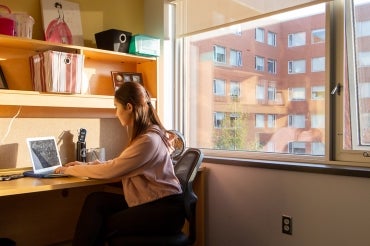
U of T students living in residence this fall will enjoy a rich, full-featured experience amid measures to keep the community safe during COVID-19 (photo by Stephen Dagg)
Published: July 10, 2020
For many students, living in residence is a key part of the post-secondary experience – a place to be surrounded by the rhythms of university life and make lasting friendships.
Staff at the University of Toronto have been working hard over the last several months to ensure that new and returning students to residence will continue to enjoy a rich, full-featured experience – all while taking the necessary steps to keep the community safe amid COVID-19.
Sandy Welsh, U of T’s vice-provost, students, says the university is striving to provide students with the best possible residence experience in the upcoming term.
“We know that residence is an important component of the student experience when it comes to finding community, making friends and engaging with one’s studies,” she says.
“We’re really looking forward to students’ arrival and we’re doing everything we can to ensure they are safe and have opportunities to make meaningful connections on campus.”
From assigning one student per room to launching a host of new community-building events, here are just a few of the changes coming to campus dorms this fall:
Reduced occupancy
In a bid to limit overall occupancy and facilitate physical distancing, residence staff across the three campuses are assigning no more than one student per room – even if the spaces are large enough to accommodate multiple residents.
However, there may be some exceptions, including for students who belong to the same household – siblings, for example – or students with medical concerns that require accommodation.
Staggered move-in days
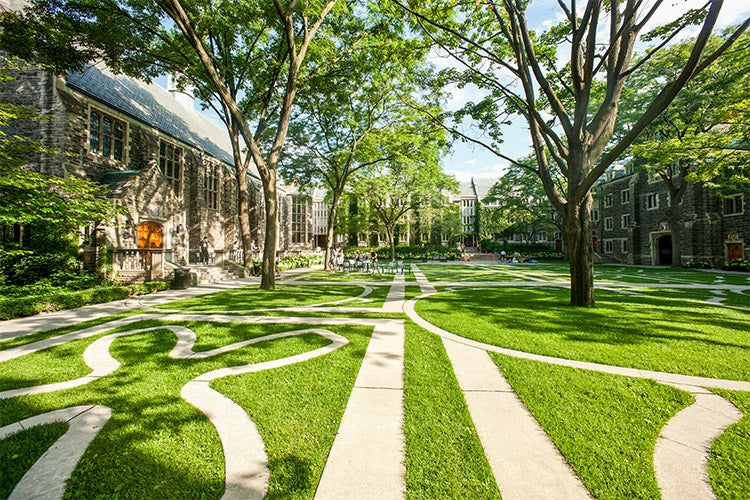
Trinity College is contemplating at least two move-in days: one for new students and one for returning students (photo by Arthur Kwiatkowski)
In a typical year, students and their families descend on residences by the hundreds with luggage and mini fridges in tow.
This year, by contrast, residence staff are planning to spread move-ins over multiple days in an effort to limit the number of people on campus at one time and promote physical distancing.
At Trinity College, for example, staff are contemplating at least two move-in days: one for new students and one for returning students, according Kristen Moore, Trinity’s dean of students.
A clean, safe space to live and study
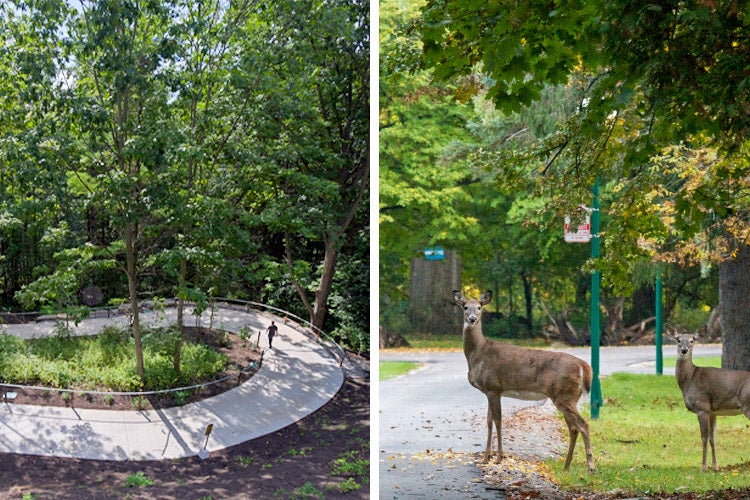
Students living in residences at U of T Scarborough and U of T Mississauga have easy access to leafy surroundings for outdoor activities (photos by Don Campbell and Cesar Mejia)
Across the three campuses, residence staff are taking a host of precautions informed by the latest public health advice to protect the U of T community.
“There is just an incredible caution and incredible planning on our part to make sure students and staff are safe,” said Chad Nuttall, the director of student housing and residence life at U of T Mississauga.
That includes more frequent cleaning and disinfecting, new sanitizing stations and Plexiglass barriers where appropriate, among other U of T-wide protective measures.
Nuttall says residence staff in Mississauga also plan to take even greater advantage of the campus’s leafy surroundings by hosting more small outdoor events that strictly observe public health guidelines.
More activities, smaller groups
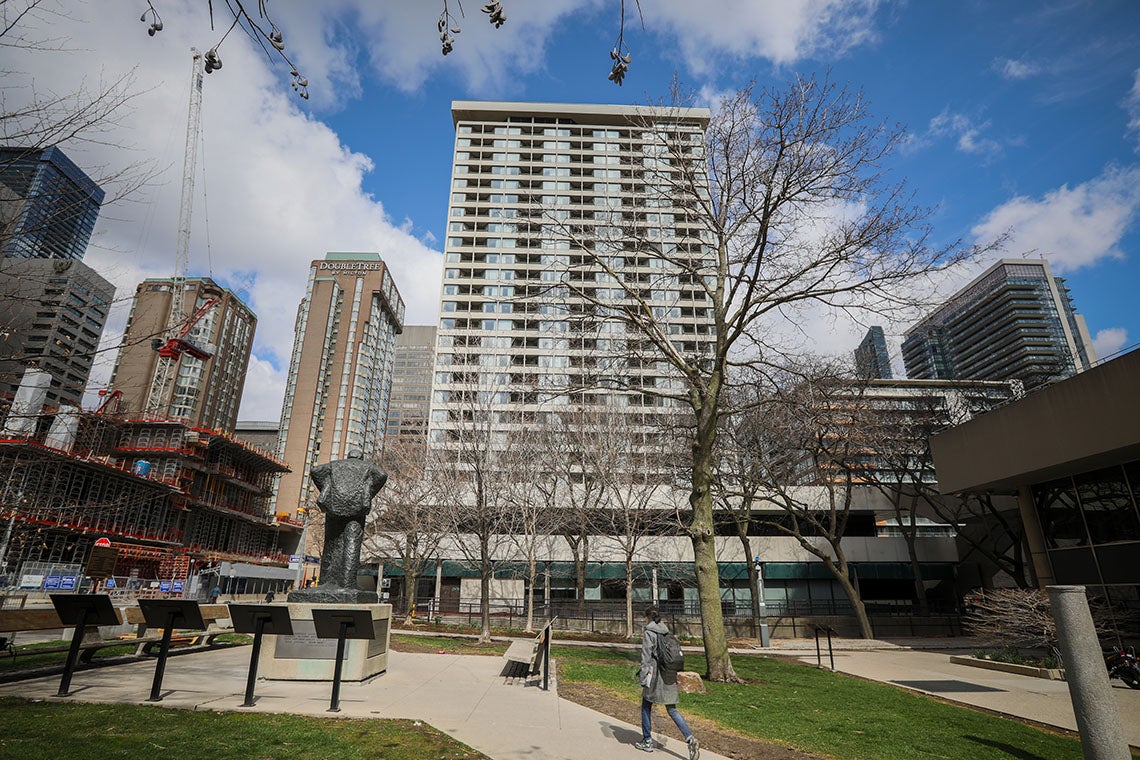
Chestnut Residence, near the St. George campus, is one of several U of T residences that is building a range of virtual activities for students (photo by Johnny Guatto)
Residences across the three U of T campuses are planning to offer a wider range of small group, one-on-one or virtual activities in partnership with other branches of the university.
Already this summer, students have gotten a taste of the new approach, including Netflix watch parties, Hart House’s online board game nights and Sport & Rec’s virtual fitness classes.
“Now, you can engage in these activities from anywhere with the click of a button,” says David Kim, dean of residence and director of student life at Chestnut Residence, near the St. George campus.
“We’re looking to build on the range of virtual offerings like these and, at the same time, we’re looking to create a more intimate atmosphere for students with a variety of models that speak to the needs and interests of our residents.”
Moore says staff at Trinity are similarly designing smaller events that cater to students’ individual preferences.
“We think of this as an opportunity in residence to do things that are more specific to [students’] areas of interest, or even the interests of people living on a single floor,” she says.
At U of T Scarborough, Desmond Pouyat, dean of student experience and wellbeing, says it’s possible residences will host larger events if guidelines change – but he stresses safety remains the top priority.
“Wherever we can bring students together safely with physical distancing and respecting other public health guidelines, we will,” he says, adding that staff understand students’ desire to be together.
“The university community is all about that.”
Fresh-made food that’s ready to go
U of T has put considerable thought into reimagining its food delivery services to reduce crowding and mitigate risk. For example, kitchen staff on all three campuses now wear personal protective equipment and prepare a wider variety of freshly made, grab-and-go dishes – so hungry students don’t have to wait in long lines.
Plans are also underway to roll out a mobile app allowing students on the St. George campus to order food online for pick-up. U of T Scarborough, meanwhile, is building an online platform that allows students and faculty to order food and grocery items for delivery, among other things.
“The whole culinary team has been working hard all summer to design a menu that will be interesting and meets the dietary needs of students,” says Anne Macdonald, U of T’s assistant vice-president of ancillary services, of the planning that’s taken place on the St. George campus.
While cafeterias may currently be focused on take-out meals, Macdonald says it’s possible that dining services will be expanded if the situation continues to improve. And, as always, she says kitchens will continue to use fresh and local ingredients.
“Working with local farmers and producers is something we really care about,” Macdonald says. “The pandemic hasn’t diminished our desire to do that one bit.
“In fact, it’s more important than ever to support local producers and suppliers in a situation like this when there’s so much economic hardship.”
Safe access to amenities
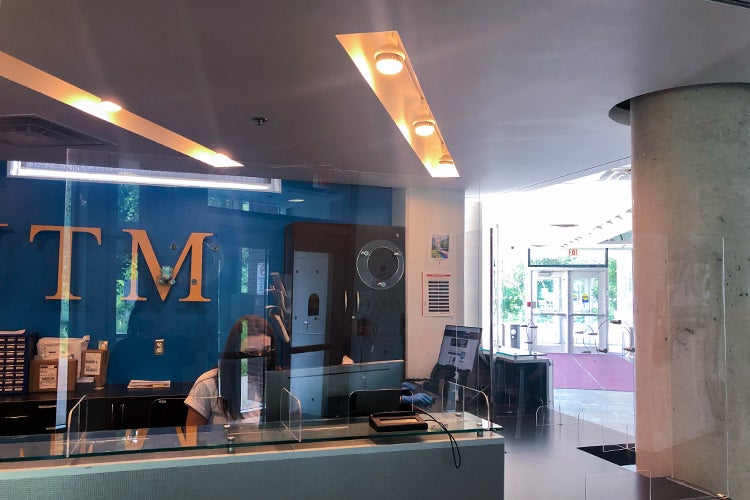
A staff member works behind a barrier at U of T Mississauga’s Oscar Peterson Hall (photo by Jessica Huang)
Students will still be able to use study spaces, common rooms and other amenities in residence, with the knowledge that staff have introduced measures to keep everyone safe.
At Chestnut, Kim says staff have rearranged furniture to encourage physical distancing while still allowing for movie and games nights, albeit with smaller groups.
And, at a number of residences, staff are considering schedules and booking systems so that students can continue to use common spaces without putting themselves or others at risk of infection.
“Normally our capacity is limited by fire code, but we think that come fall our capacity will have to be limited by public health guidelines,” Moore says.
Support for students who need to be quarantined
If new or returning students are coming from outside Canada and need to quarantine, the university will help facilitate their stay on or off-campus.
“In keeping with our caring community approach, we want to support the overall health and safety of our students and the broader public,” Welsh says.
More details on how to access quarantine-related accommodation will be available later this summer.



